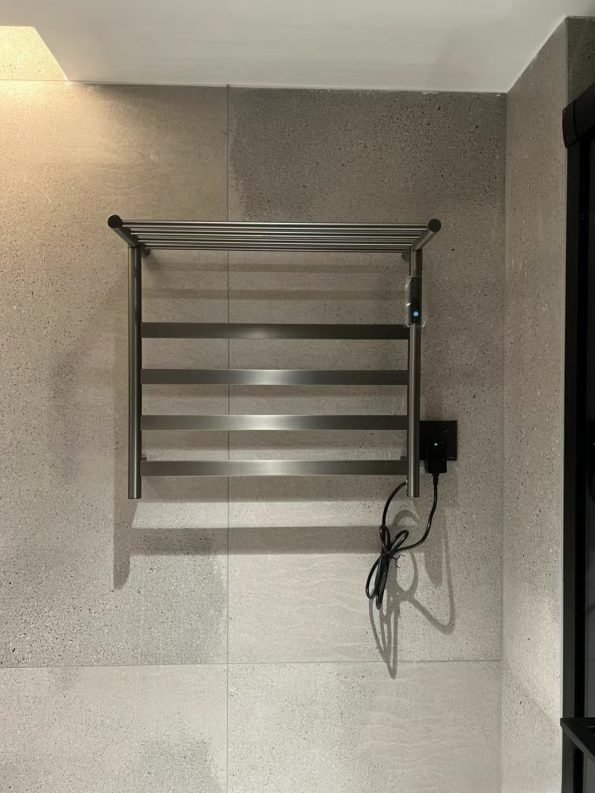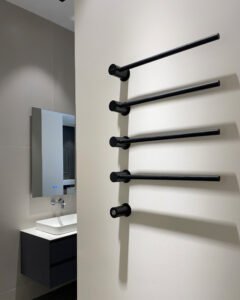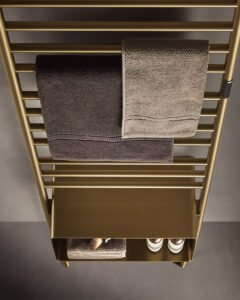In the realm of modern convenience and luxurious living, the “towel warmer” stands as a testament to the fusion of functionality and indulgence. As an essential fixture in bathrooms around the world, the towel warmer has transcended its humble beginnings to become a symbol of comfort and sophistication. This article delves into the world of towel warmers, exploring their history, benefits, and the various types available, while highlighting their transformative impact on our daily routines.

The term “towel warmer” may sound straightforward, but its implications are far-reaching. Beyond the basic function of heating towels, these devices have evolved into sophisticated accessories that add a touch of opulence to bathrooms. Imagine stepping out of a soothing shower and enveloping yourself in a warm, fluffy towel – an experience that transcends mere practicality, fostering a sense of relaxation and pampering.
Historically, the concept of warming towels can be traced back to ancient civilizations that recognized the therapeutic and hygienic benefits of using warm textiles. However, it wasn’t until the 20th century that the modern towel warmer emerged as a domestic appliance. Initially, these devices were associated with high-end spas and luxury hotels, but advancements in technology and manufacturing processes have made them more accessible to the average homeowner.
The benefits of incorporating a towel warmer into your daily routine extend beyond the obvious comfort factor. Firstly, they enhance hygiene by promoting quicker drying of towels, reducing the likelihood of bacteria and mildew growth. This not only contributes to a healthier living environment but also extends the lifespan of your towels. Additionally, a towel warmer can serve as a space heater, especially in colder climates, creating a cozy ambiance in the bathroom and eliminating the shock of stepping onto cold tiles.
Towel warmers come in various types, each catering to different preferences and requirements. The most common types include hydronic, electric, and plug-in models. Hydronic towel warmers are connected to the home’s central heating system, utilizing hot water to generate warmth. Electric towel warmers, on the other hand, operate independently and are easy to install, making them a popular choice for retrofitting existing bathrooms. Plug-in towel warmers are portable and can be moved around the house, providing flexibility in usage.
Design is another aspect that sets towel warmers apart. They are available in an array of styles, from traditional to contemporary, allowing homeowners to choose a model that complements their bathroom aesthetics. Whether you prefer a sleek, minimalist design or a more ornate and decorative piece, there’s a towel warmer to suit every taste.
The installation process of towel warmers is relatively straightforward, with many models designed for easy DIY installation. However, for those who prefer professional assistance, plumbers and electricians can ensure a seamless integration into the existing bathroom infrastructure. Regardless of the type or design chosen, the long-term benefits far outweigh the initial investment.
As we navigate the demands of a fast-paced world, it becomes increasingly important to carve out moments of relaxation and self-care. The towel warmer, once considered a luxury, has become a practical addition to our daily rituals, transforming the mundane act of drying off into a sensory indulgence. In conclusion, the towel warmer is not merely a household appliance; it is a statement of our commitment to comfort, well-being, and the pursuit of a more luxurious lifestyle.


